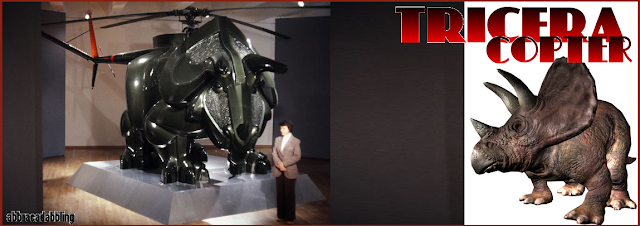It's quite possible that if he'd had wings, or at least a propeller, Triceratops might just have escaped that big game-ender, the Cretaceous–Tertiary extinction event. We thought that may have been what inspired sculptor Patricia Renick to create her masterpiece, the Triceracopter, but instead her inspiration came from asking such questions as How far are we going to push technology? How different are machines from animals, or how different will they eventually be?
From its full title, Triceracopter:Hope for the Obsolescence of War, one can begin to understand the meaningfulness of Renick's fiberglass and metal sculpture, which merges the body of the three-horned dinosaur with the frame of a US Army OH6A/Cayuse helicopter. By fusing technology and her art seamlessly into a piece that is immediately captivating, the messages implied in Renick's work carry as much weight today as they did when she finished the project in 1977.
Renick, who passed away in 2007, said of Triceracopter: "I had an idea for a sculpture bearing on the aftermath of the Vietnam War. Although I didn’t have a commission or promise of a show, I thought the idea might be timely for the 1976 U.S. Bicentennial. I did not see the work as a celebration, but as a cautionary tale, an expression of hope for the end of war. War is a dichotomy. It seduces the dream-self through heroic fantasy while threatening the physical self with extinction".
Triceracopter, measuring 13 x 10 x 30 ft, was first shown at the Contemporary Arts Center in Cincinnati in 1977, but is now available for acquisition by a qualified museum, institution or individual. If you've got room in your Bat-cave for one very large and very cool curiosity, inquires can be made to triceracopter@gmail.com.



No comments:
Post a Comment